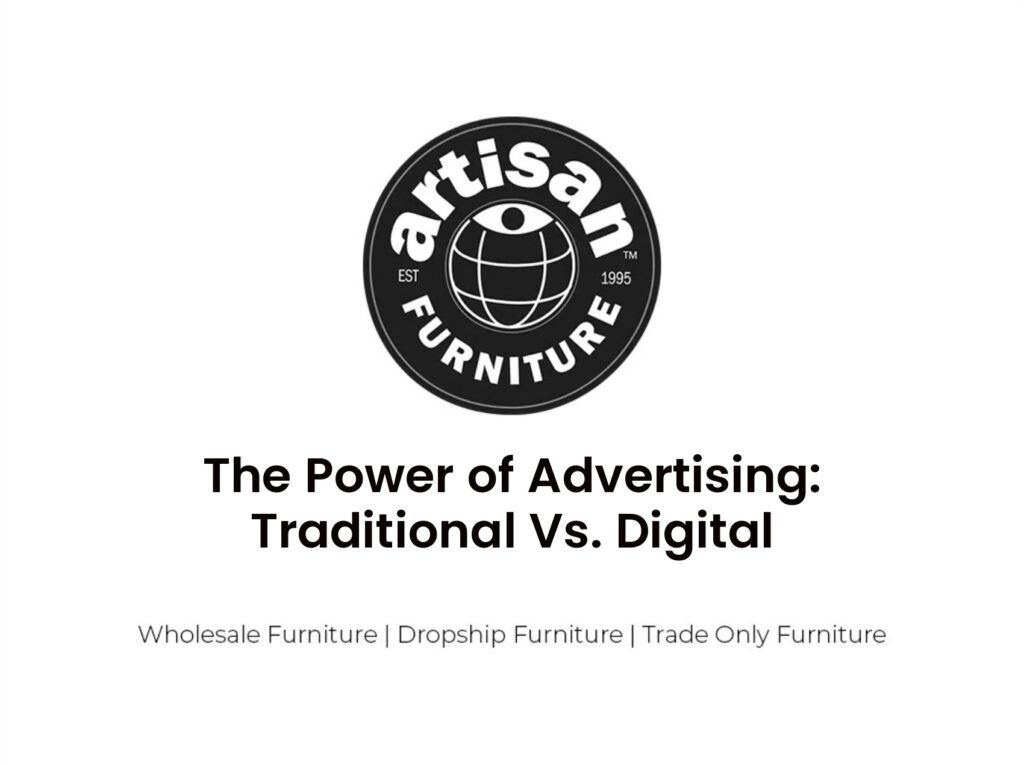The Power of Advertising: Traditional Vs. Digital
In today’s ever-evolving world of marketing, the battle between traditional and digital advertising methods rages on. While traditional methods like print ads, TV commercials, and billboards have long been the go-to for reaching a wide audience, digital advertising offers a more targeted and precise approach. Businesses can now utilize social media ads, mobile ads, and search and display ads to reach specific demographics. This article delves into the power of advertising and explores the effectiveness of both traditional and digital methods in influencing and capturing consumers’ attention.
Table of Contents
ToggleThe Impact of Traditional Advertising
Traditional advertising continues to have a significant impact on consumers through print ads in magazines, newspapers, and flyers, as well as billboards, TV commercials, and radio spots. Despite the rise of digital advertising, traditional methods still play a crucial role in reaching and influencing target audiences. Print ads in magazines and newspapers allow for a tangible experience, with consumers able to physically hold and engage with the advertisement. Billboards strategically placed in high traffic areas grab attention and create brand awareness. TV commercials and radio spots utilize audio and visual cues to convey messages and connect with viewers and listeners. Traditional advertising methods continue to be effective in reaching a wide range of consumers and can complement digital advertising strategies to create a comprehensive marketing campaign.
Advantages of Digital Advertising
Digital advertising offers precise targeting, allowing businesses to reach their desired audience with tailored messages and optimize their marketing efforts. It provides several advantages over traditional advertising methods:
-
Cost-effective: Digital advertising is generally more affordable than traditional methods, making it accessible to businesses of all sizes.
-
Measurable results: With digital advertising, businesses can track and measure the success of their campaigns in real-time, allowing for quick adjustments and optimization.
-
Increased reach: Digital advertising has the potential to reach a much larger audience compared to traditional methods. With the rise of social media and online platforms, businesses can target users globally and expand their reach beyond local markets.
Overall, digital advertising offers businesses the opportunity to maximize their marketing efforts by reaching the right audience, measuring results, and expanding their reach in a cost-effective manner.
Traditional Advertising in the Digital Age
In today’s digital age, businesses are finding innovative ways to blend traditional advertising methods with modern technology. While digital advertising has become increasingly popular due to its ability to reach a wider audience and offer precise targeting options, traditional advertising still holds its ground. Many businesses are realizing that combining the two can create a powerful marketing strategy. For example, companies are using billboards and print ads to drive traffic to their websites or social media pages, where they can engage with their audience on a more personal level. Additionally, traditional advertising methods like TV and radio ads can still be effective in reaching certain demographics that may not be as active online. By incorporating traditional advertising into their digital campaigns, businesses can maximize their reach and effectively connect with their target audience in today’s digital world.
Harnessing the Power of Digital Advertising
Combining innovative technology with traditional methods allows businesses to effectively connect with their target audience in today’s digital world.
-
Personalized targeting: Digital advertising provides businesses with the ability to target specific demographics, interests, and behaviors of their audience. This allows for more precise messaging and higher engagement rates.
-
Real-time data and analytics: Digital advertising platforms offer real-time data and analytics, giving businesses the ability to track and measure the success of their campaigns. This allows for quick adjustments and optimizations to ensure maximum impact.
-
Interactivity and engagement: Digital advertising allows for interactive and immersive experiences, such as videos, quizzes, and gamification. This not only captures the attention of the audience but also encourages them to actively engage with the brand.
Integrating Traditional and Digital Advertising Strategies
By seamlessly blending traditional and modern advertising methods, businesses can create a cohesive and impactful marketing strategy. This integration allows companies to reach a wider audience and maximize their marketing efforts. The table below highlights the key features of both traditional and digital advertising:
| Traditional Advertising | Digital Advertising |
|---|---|
| Print advertising in magazines, newspapers, and flyers | Social media advertising with precise targeting |
| TV advertising | Search and display advertising tailored to keyword searches and retargeting |
| Radio advertising | Mobile advertising targeting users always on their devices |
| Billboards | Popups with calls to action |
Integrating these strategies enables businesses to leverage the strengths of each method. Traditional advertising can provide a wide-reaching and tangible presence, while digital advertising offers precise targeting and real-time tracking. By combining the two, companies can effectively engage their target audience, increase brand awareness, and drive conversions. This cohesive approach allows businesses to stay relevant in today’s digital age while still utilizing the proven effectiveness of traditional advertising methods.
Measuring the Effectiveness of Traditional and Digital Advertising
Measuring the effectiveness of traditional and digital advertising is crucial for businesses to understand the impact of their marketing efforts.
-
Tracking website analytics: Businesses can measure the effectiveness of digital advertising by analyzing website traffic, bounce rates, and conversion rates. This data provides insights into the success of specific advertising campaigns and helps optimize future strategies.
-
Customer surveys and feedback: Gathering feedback from customers through surveys can provide valuable information about the impact of advertising. By asking customers how they discovered the business or what prompted them to make a purchase, businesses can gain insights into the effectiveness of both traditional and digital advertising efforts.
-
Sales data analysis: Examining sales data can help identify patterns and correlations between advertising efforts and sales performance. By tracking sales before, during, and after advertising campaigns, businesses can assess the direct impact of their advertising on revenue generation.


